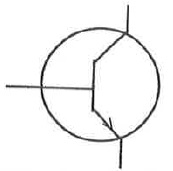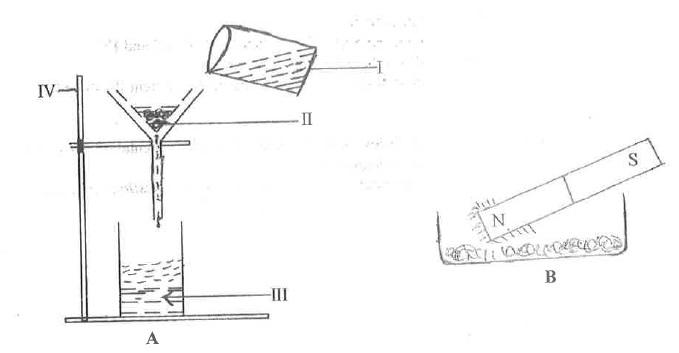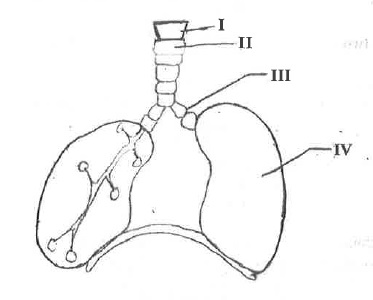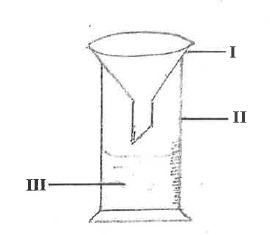
Finwaver.com
Your school or business runs better on finwaver.com. Sign up for free one (1) week try.
1.
The energy transformation that takes place in a solar cell is
light to chemical.
light to electrical.
electrical to heat.
electrical to light.
2.
All flowering plants end their life cycle with
seed formation.
seed development.
seed dispersal.
seed germination.
3.
Soil texture is a term used to describe the
amount of water soil can hold.
arrangement of soil particles in a given soil.
properties of soil, silt and clay in a sample of soil.
mixture of all soil particles.
4.
Which of the following processes is an example of a physical change?
Fermentation of food
Respiration
Magnetization of iron
Lighting a match
5.
An example of a storage pest is
yam beetle.
capsid.
army worm.
weevil.
6.
The solid component found on the filter paper and the liquid component that flows into a container during filtration are respectively called
filtrate and residue.
condensate and residue.
residue and filtrate.
residue and condensate
7.
A capacitor is connected in a series circuit with LED, a battery and a switch. When the circuit is closed, the LED
comes on and stays on.
flashes and goes off.
does not come on.
flashes and stays on.
8.
The ion that causes hardness in water is
CO32-.
Mg2+.
Na+.
OH-.
9.
Which of the following substances are matter?
I. Hydrogen
II. Air
III. Stone
I and II only
I and III only
II and III only
I, II and III
10.
The main reason for staking tomato is to ensure
bigger fruit development.
air circulation on the farm.
upright growth of the plant.
that fruits do not get rotten.
11.
Which of the following statements about clayey soil is not true? It
swells when dry and shrinks when wet.
has high water retention.
is difficult to plough when dry
is compact when dry.
12.
It is not advisable to use old electrical gadgets because they
are not efficient.
are dangerous.
produce sparks.
waste energy.
13.
Which of the following planets are closer to the sun than the Earth?
Venus and Mars
Venus and Mercury
Mercury and Mars
Venus and Saturn
14.
Which of the following statements about pressure in liquids is/are correct?
I. Pressure in liquids at the same level acts equally in all directions.
II. Pressure in liquids depend on the area of the liquid.
III. Pressure in liquids decreases with depth.
I only
II only
I and III only
I, II and III
15.
Soil depletion is not caused by
erosion.
afforestation.
leaching.
illegal mining.
16.
What force makes a ripe mango fall from a tree?
Force of tension
Magnetic force
Electrostatic force
Gravitational force
17.
Urea is a good source of
phosphorus in the soil.
calcium in the soil.
sodium in the soil.
nitrogen in the soil.
18.
Which of the following statements are reasons for conserving energy?
I. Insufficient production of energy
II. Increasing demand of energy
III. Limiting production of carbon (IV) oxide
I and II only
I and III only
II and III only
I, II and III
19.
A force meter measures
mass.
temperature.
weight.
work.
20.
Which of the following bodies are natural sources of light?
I. Moon
II. Sun
III. Glow Worm
I and II only
I and III only
II and III only
I, II and III
21.
Which of the following characteristics is/are of the image formed in a pinhole camera? The image is
I. inverted.
II. virtual.
III. diminished.
I only
II and III only
I and III only
I, II and III
22.
The floor of a room has length 20 m and breadth 15 m. Determine the area of the floor.
35 m2
200 m2
250 m2
300 m2
23.
Rainfall is a result of
low pressure.
strong wind.
cold wind.
low humidity.
24.
An example of a first class lever is
bottle opener.
crow bar.
wheel barrow.
fishing rod.
25.
Green plants have the ability to make their own food hence they are known as
producers.
parasites.
consumers.
decomposers.
26.
The periodic table is an arrangement of elements according to increasing
atomic number.
mass number.
nucleon number.
neutron number.
27.
The number required to make the following chemical equation balanced is:
H2 + 02 → H2O
1⁄2.
1.
1⁄3.
3.
28.
The ovary, style and stigma are collectively known as the
stamen.
pistil.
fruit.
stem.
29.
A mixture of alcohol and water can best be separated by
filtration.
condensation.
distillation.
evaporation.
30.
An atom 2311X forms bond by losing one electron, the charge on the ion formed is
-1
-2
+1
+2
31.
The hard outer surface of a tooth is called
root.
dentine.
cement.
enamel.
32.
People who travel in space are called
geologists.
astronauts.
space shuttlers.
astronomist.
33.
The practice of growing cowpea and maize on a piece of land at the same time is known as
mixed farming.
mixed cropping.
land rotation.
crop rotation.
34.
A lunar eclipse may occur when the
moon is between the earth and the sun.
sun is between the earth and the moon.
earth is between the sun and the moon.
moon is positioned far away from the earth.
35.
Which of the following instruments can be used to measure the diameter of a circle?
A metre-rule
A thermometer
An ammeter
A string
36.
When gases are heated they
melt.
sublime.
decrease in volume.
decrease in intermolecular forces
37.
The shoot system of a flowering plant develops from the
radicle.
plumule.
cotyledon.
endosperm.
38.
The diagram below is an illustration of a transistor.

The arrow shows the direction of:
electron movement.
hole movement.
electron and hole movement.
negative charge movement.
39.
Digestion of protein begins in the stomach and ends in the
large intestine.
small intestine.
appendix.
caecum.
40.
Which of the following substances is a compound?
Copper
Diamond
Sucrose
Sulphur
(a)
The diagrams below are illustrations of an experimental set-up.
Study the diagrams carefully and answer the questions that follow.

(i)
Identify each of the parts labelled I, II and III.
(ii)
Name the method of separation in each of the set-up:
Α
A;
Β
B.
(iii)
State the class of mixtures that the experimental set-up A could be used for.
(iv)
Give a reason for the answer stated in (iii).
(v)
Name one possible component of the mixture in set-up B.
(vi)
State the function of the part labelled IV.
(b)
The diagram below is an illustration of a part of a system in human.
Study the diagram carefully and answer the questions that follow.

(i)
Name the system illustrated
(ii)
Name each of the parts labelled, I,II,III, and IV.
(iii)
What is the role of the part labelled I.
(iv)
Name three diseases that affects the system illustrated.
(c)
The diagram below is an illustration of an experimental set-up used to measure an ecological factor.
Study the diagram carefully and answer the questions that follow.

(i)
Identify the apparatus illustrated.
(ii)
Name each of the parts labelled I,II and III.
(iii)
Give one use each of the parts labelled I and II.
(iv)
What ecological factor was measured?
(v)
State three ways in which the ecological factor measured in (iv) is important in agricultural soils.
(vi)
Name one farm tool that aids the ecological factor measured in (iv) to perform its function in agricultural soils.
(vii)
Describe how the farm soil tool named in (vi) is used to aid the factor measured in the experiment.
(d)
The diagrams below are illustrations of electrical circuits.
Study the diagram carefully and answer the questions that follow.

(i)
Identify each of the components labelled I, II and III.
(ii)
State the type of arrangement of resistors (R) in B.
(iii)
State the effect of the arrangement of resistors in each of the diagrams A and B on III.
(iv)
Give a reason for each of the answers stated in (iii).
(a)
State three differences between metals and non-metals in terms of their physical properties.
(b)
(i)
Explain the term active region as applied to transistors;
(ii)
State what happens in the active region of a transistor.
(c)
(i)
State two effects of lack of protein in the diet of humans.
(ii)
Describe briefly the chemical test for glucose.
(d)
(i)
What are soil resources?
(ii)
State two agricultural activities which make the soil lose its nutrients.
(a)
List in the correct order, the organs through which food passes from the mouth to the anus.
(b)
State the components of a balanced ration for feeding poultry.
(c)
Predict the products formed when:
(i)
magnesium solution reacts with dilute hydrochloric acid;
(ii)
potassium reacts with water.
(d)
(i)
State two effects of heat on a substance.
(ii)
Potassium permangante crystals are dropped into a beaker of water and warmed:
(α)
State what would be observed;
(β)
State the phenomenon demonstrated in (α).
(a)
(i)
Name the stages in the life cycle of a mosquito.
(ii)
Name the stage at which feeding does not take place.
(b)
Explain briefly why air is regarded as a mixture.
(c)
(i)
What is a magnetic pole?
(ii)
State two uses of temporary magnets.
(d)
Give four reasons for planting crops in rows.
(a)
(i)
Name two elements which make the teeth of mammals strong.
(ii)
Name two common diseases of the human teeth.
(b)
State three reasons why sandy soil cannot support effective plant growth.
(c)
An atom has 13 protons and 14 neutrons:
(i)
draw and label the structure of the atom.
(ii)
State its valency.
(d)
(i)
State three ways in which fluid pressure is applied in everyday activities.
(ii)
State one substance that is an insulator.
(a)
Explain the term mixed cropping.
(b)
(i)
What is an alloy?
(ii)
Name the constituent elements in brass.
(c)
(i)
State three effects of dumping waste materials into water bodies.
(ii)
State one function of each of the following factors in photosynthesis:
(α)
chlorophyll;
(β)
water.
(d)
(i)
What is work?
(ii)
A block of wood of mass 10 kg was dragged through a distance of 3.2 m when a force of 20 N was applied. Calculate the work done.